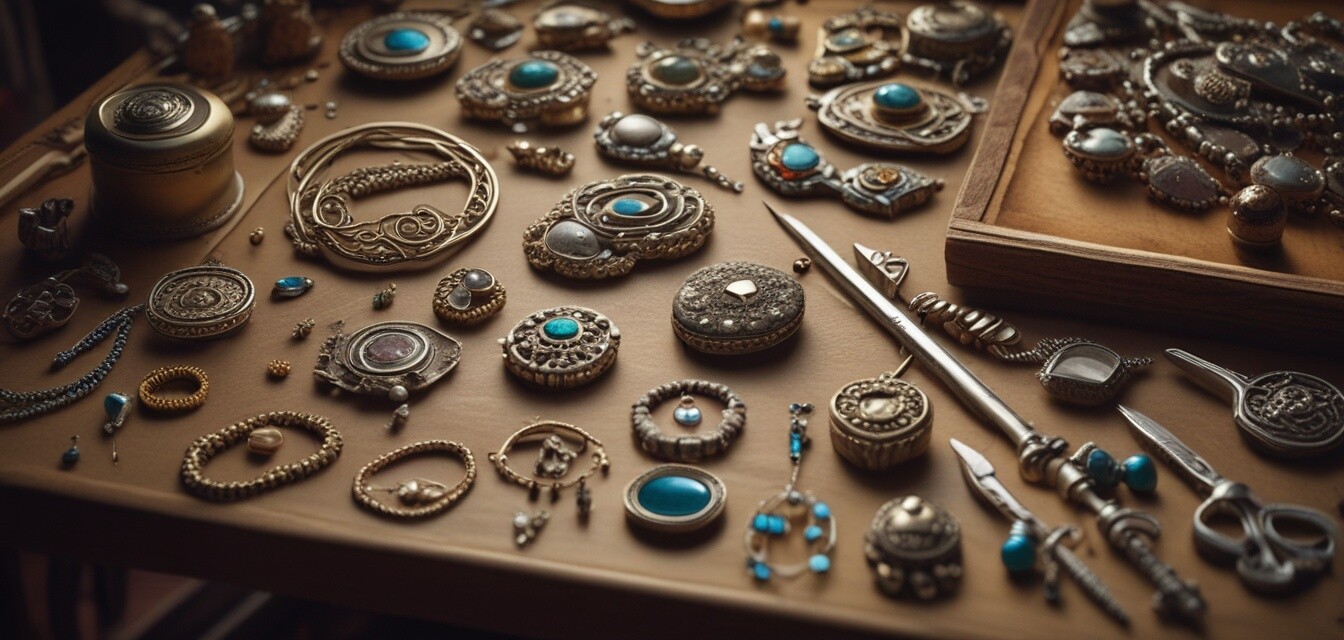
Unique Techniques in Artisan Jewelry Making
Key Takeaways
- Artisan jewelry making blends traditional craftsmanship with modern creativity.
- Various cultures have developed unique techniques, including metalworking, stone setting, and engraving.
- Understanding these techniques enriches appreciation for fine jewelry.
Jewelry making is not just a craft; it is an art form that represents culture, tradition, and the unique touch of the artisan behind it. In this article, we will explore some of the unique techniques in artisan jewelry making, showcasing the distinct styles and processes from various cultures and regions. From intricate metalwork to the art of gemstone setting, each technique has its own story and significance.
The significance of artisan techniques
Artisan techniques in jewelry making are essential for preserving cultural heritage. Each method contributes to the richness of jewelry design, reflecting the values and traditions of different peoples. These techniques require skill and a deep understanding of materials, giving rise to pieces that tell a story.
1. Metalworking Techniques
Metalworking is one of the most fundamental techniques in artisan jewelry making. Here are some common metalworking techniques:
| Technique | Description |
|---|---|
| Forging | A method where metal is shaped by hammering or pressing. |
| Soldering | Joining two pieces of metal using a filler metal that melts at a lower temperature. |
| Granulation | A decorative technique using small metal balls to create patterns or textures. |
2. Stone Setting Techniques
Setting stones is an art that defines the jewelry's final look. Different techniques vary by region and can include:
| Technique | Description |
|---|---|
| Claw Setting | Using metal claws to hold stones securely in place. |
| Bezel Setting | A metal rim surrounds the stone, providing a flush fit. |
| Pave Setting | Small stones are set closely together, creating a surface that sparkles. |
3. Engraving Techniques
Engraving adds depth and detail to the jewelry. Various cultures have unique styles of engraving:
| Technique | Description |
|---|---|
| Hand Engraving | A traditional method where artists use a chisel to carve designs into metal. |
| Laser Engraving | Using lasers to create precise and intricate patterns. |
| Chasing and Repoussé | Chasing is used to create relief by pushing the metal from the back, and repoussé does the opposite. |
Exploring regional techniques
Around the world, artisans employ distinctive techniques that reflect their local materials and influences:
African Techniques
In Africa, artisans often work with metals such as brass and copper. Techniques like lost-wax casting allow them to create intricate designs that symbolize their rich cultural heritage.
Asian Techniques
Asian cultures, especially in India and Japan, utilize techniques like filigree, where fine threads of metal are arranged to create delicate designs. The cultural significance associated with each piece is profound.
Western Techniques
In Western jewelry making, techniques such as casting and enameling are popular. Enameling, in particular, shifts elements and color depth, creating vibrant pieces cherished by many.
Caring for artisan jewelry
Understanding how to care for artisan jewelry can significantly extend its life. Consider the following tips:
Jewelry care tips
- Store pieces separately to prevent scratching.
- Clean your jewelry regularly with appropriate solutions to maintain its shine.
- Avoid exposing jewelry to harsh chemicals that could damage the material.
- Consider getting your pieces professionally cleaned once a year.
Conclusion
The unique techniques of artisan jewelry making not only yield beautiful pieces but also preserve the cultural stories and traditions behind them. Understanding these techniques enhances your appreciation for jewelry. Whether you are a collector or simply someone who admires fine craftsmanship, exploring these methods deepens your connection to the art form.
Pros
- Each piece is unique and carries a rich history.
- Artisan techniques contribute to sustainable practices in jewelry making.
- Support local economies and artisans through purchases.
Cons
- Artisan jewelry can sometimes be more expensive than mass-produced pieces.
- Finding specific artisan techniques may require extra research.
- Some techniques may limit the availability of pieces.
Learn More
To further your understanding of jewelry, explore our Buying Guides for insightful recommendations. Check out our engagement rings that feature exquisite artisan techniques or visit our News and Trends section for the latest in jewelry design. For expert insights into maintenance, see our Expert Insights category for comprehensive knowledge.